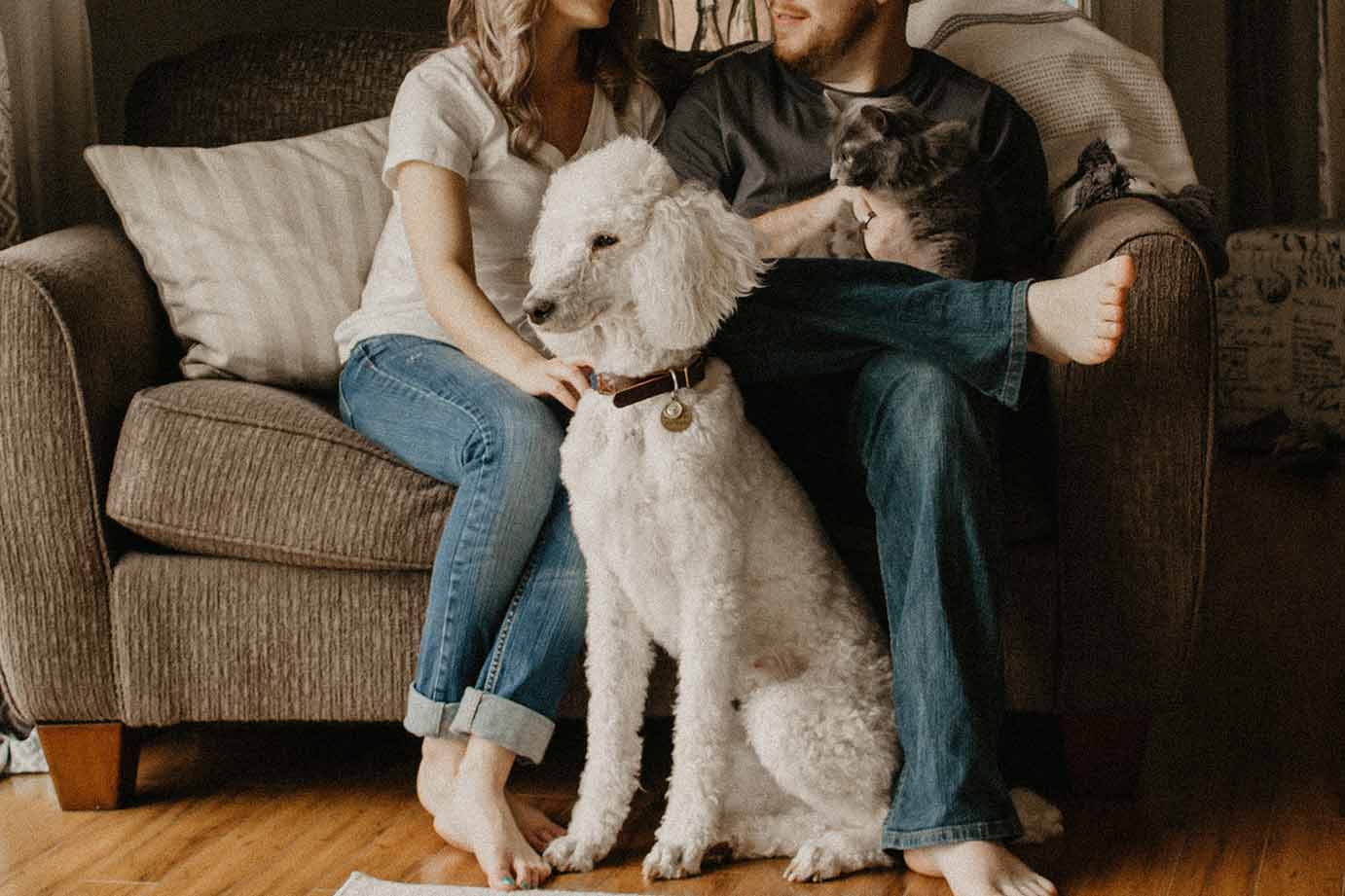
What is it in pets’ eyes and meows that make people cuddle them and go “awww”? They know how to pull people’s heartstrings. Pets, especially the cuddly ones, easily make their way into the family so that they cease to be mere animals and become the cutest and tiniest members of the family.
It’s difficult to leave them behind when families decide to go on vacation, and so inevitably and ultimately, they get to tag along and travel with everybody else. They’re hard to resist, and before you know it, you start packing pet stuff along with your clothes and travel essentials. Before you go, get to know important tips when traveling with a pet.

1. Prep your pet
You are excited to travel with your pet. However, the real question is, does your pet want to go with you?
It’s so easy to forget that pets are not humans, and they don’t possess social skills similar to yours. Animals can get easily terrified of strangers, loud sounds (especially fireworks for dogs), noisy environments, and stressful situations.
So how would you know if your pet wants to go through the hassle of traveling with humans? No one could sense what they’re feeling better than you can. You know your pet’s personality, wants and hates, and how they react to people and the situations.
Other than your pet’s mood, you should also consider whether they are healthy enough to travel. Consult your vet if you have any doubt about whether or not your pet can handle the trip.
2. Tag it
Get your pet their ID. Traveling or not, it is in your animal’s best interest to have a tag carrying his name and your cell number. These days, pet tags are not made with leather or any other materials. Dogs and cats nowadays have a microchip for a tag.
A microchip dog tag is about the size of a grain of rice and easily injected beneath your pet’s skin. They are programmed with a unique ID number. If your pet gets lost, anyone can simply scan him to identify the real owner; and with a phone number to make it easy to reach you. This tech has been proven to be very helpful. Microchipped dogs are more than twice as likely to be reunited with their owners as non-microchipped dogs.

3. Animal documents
Before you travel, ask your vet for health records, medication information, proof of vaccinations and make sure to carry them with you. In case your destination questions your pet’s health and safety, you are ready with the necessary documents to prove your animal’s travel worthiness.
In some cases, you might need to get a pet passport. Rules vary by airline and country, so it’s best to be prepared. Also, it is helpful and wise to attach your dog’s rabies tag to her collar (which proves vaccination) and treat your pet with preventive flea and tick medication before you go.
4. Stick to normal
To make the experience less stressful for your pet, maintain your usual schedule. As much as possible, feed your animal at the exact times of day as you would at home.
You should know by now that dogs get some of their security when they follow a specific routine. They know when to eat, go for a walk, play, and sleep. If you keep to this schedule, they should feel at home, relaxed, and maybe even enjoy being away from home.
Don’t be tempted to overfeed your pet when going on a long journey, thinking he needs the extra nourishment. Like people, a light meal for your animal a few hours before leaving can help avoid nausea during the trip.
Avoid being adventurous when it comes to food. Again, your pet, although almost human, isn’t a person who might want to sample exotic, local dishes. Bring your pet’s food from home, and stick to bottled water. Changes in diet and water quality can upset your pets just as they can with people. Always be mindful of pet travel safety, including what food they eat.
5. Be a friend
A dog is a man’s best friend. This is so true, and when traveling to an unfamiliar place, be your pet’s best friend too. They need that.
Once you reach your destination, stay with your ‘friend’ for a while to help get him settled. If you’re staying in a new rental property, don’t leave your pet alone for 24 hours or until they have settled and slept there.
A good sleep through the night signals your dog that this is home and you’re coming back. When it’s time for you to head out and you have no choice but to leave your buddy behind, make sure to keep him confined to a safe area and couldn’t go out.

6. Consider cargo or carry-on
Check with your airline if your dog can fly as carry-on. This will largely depend on their size, but rules vary from airline to airline. Traveling in the cargo hold could be a frightening and traumatic experience even for animals. In addition to being separated from you, your pet is in danger of being hit by cargo items that normally shift around or fall during the flight.
Actually, plenty of animals flies in cargo every year, without incident. You and your pet just need to be prepared if this happens. Make sure to use the best pet carrier or crate that is TSA-approved. Your crate must be durable and with plenty of ventilation, robust handles, and a leak-proof bottom. Also, don’t forget to place a label with “Live Animal” and arrows showing which way is up. Include your name, phone number, address, and destination contact information on the label.
If your pet has to fly in cargo, remember to check the weather at your destination. If you’re traveling somewhere warm, look for early morning or late evening flights; when it’s cold, book flights in the middle of the day when it’s warm.
Before anything else, check with your airline. Most airlines only allow a few dogs per flight, so call and make sure they can accommodate your dog before you book a flight.
7. By car
When flying is not an option, prepare to drive with your pet, which isn’t so bad if you think about it. Below are simple and practical tips for traveling with pets by car.
- Keep your pets restrained during the ride. If you allow them to go hopping around and playing while you drive, you are risking your own life, your pet’s, and everyone else’s life. You need to focus on driving, especially when driving long and far.
- Make sure your pet isn’t a distraction. Restrain them in the backseat. In case you do meet an accident, airbags can save your life, but they can kill your pet if he was in the front seat. Place your pet in a carrier and strap it to the seat with a seatbelt.
- Make some practice runs. Animals can get easily irritated during long trips. You can take several short trips with your dog to get them accustomed to riding in a car before your real vacation. Gradually increase the length of these shorter trips to get your dog slowly accustomed to the idea.
- Don’t forget to feed your pet during the trip, but also don’t forget to stop to feed him. Don’t feed them in a moving vehicle to avoid getting them upset. Bring your own water to make sure it’s safe to drink.
Don’t let your dog ride with their head out the window. I’m sure you’ve seen this in the movies. Dogs love it and it’s really cute. However, it’s really risky and could even cost your dog’s life. When driving at top speed, even the smallest debris could seriously injure your dog.
Having a pet is good for one’s safety and mental health. They keep you company,and protect you. Traveling with a pet is not a bad idea at all. The world has gotten pet-friendly, so it is not unusual to see dogs and cats traveling with families on planes, buses, or private vehicles. Next time you go on vacation, consider bringing your pet with you for their sake and yours.
Make your travel fun and safe. Let Ask the Dutch Guy take you around!

